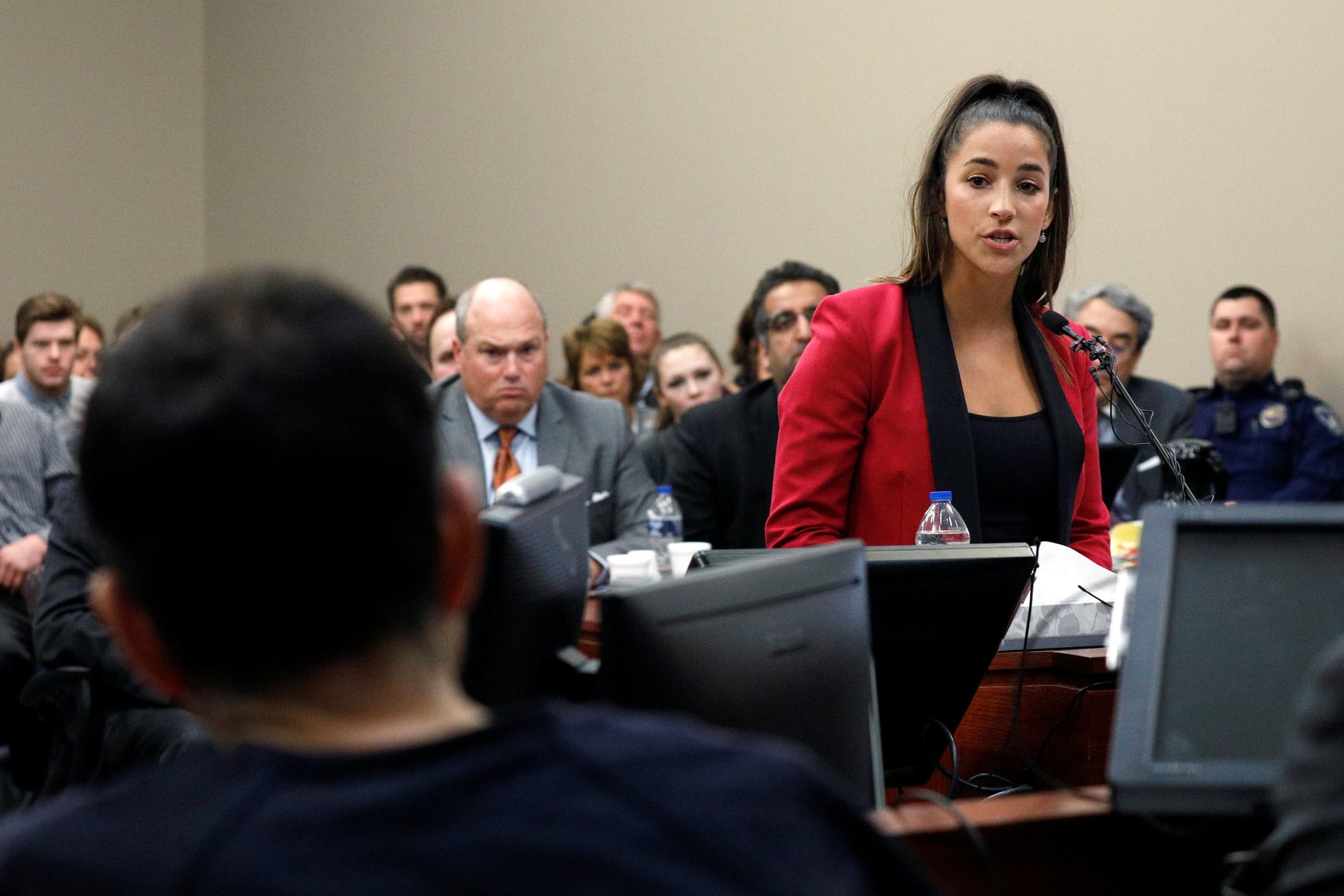Want to hear more from the actors and creators of your favorite shows and films? Subscribe to The Cinema Spot on YouTube for all of our upcoming interviews!
Hafa Adai! My name is Lauren G and I'm the girl of your dreams. I watch way too many horror films and I'm obsessed with old black and white movies. You can find me at your local movie theater!
It was the summer of 2012 when all I did was stay home and watch the London Olympics. I couldn’t get enough of the most prominent sporting event in the world and all it had to offer. The sport that stood out to me the most was Women’s Gymnastics. It was incredible to see girls just like me doing insane flips, twists, and twirls. Gymnastics is such a physically demanding sport, if not the most, and seeing women my age competing and mastering the art was simply awe-inspiring.
I watched every single event that year and continued to follow the sport once the Olympics ended. When the 2016 Rio Olympics came around, I was equally excited and couldn’t wait to indulge in all of that talent, competitiveness, and glory. In September 2016, the small but highly recognized daily newspaper The Indianapolis Star reported that the US Gymnastic’s national team doctor, Larry Nassar, has been sexually abusing young female gymnasts for decades. That significant piece of news grew rapidly and eventually became the biggest sexual abuse scandal in sports history.
Athlete A is an American documentary film that was released just a few days ago on the streaming platform Netflix. It was directed by Bonni Cohen and Jon Shenk, both award-winning directors/cinematographers. The documentary follows investigative journalists of The Indianapolis Star and how they were able to uncover the huge corruption of USA Gymnastics and their main sports doctor Larry Nassar.
The film starts off by telling the story of Maggie Nichols, who was a contender for the 2016 Rio Olympics and was just behind Simone Biles (who was considered the greatest Women’s gymnast at the time). Nichols came out to her parents about unusual treatments given to her by Nassar in 2015 and it was eventually revealed that she wasn’t put on the Olympic team because of her bravery for coming forward.
Without revealing too many details, the documentary went on to feature a few more women who were vital in the incarceration of Nassar including Rachael Denhollander who was the first woman to publicly out Nassar. She read a story put out by The Indianapolis Star in 2016 about USA Gymnastics covering up reports of sexual abuse, and from there, sparked a revolution.
The documentary also features details of the atmosphere and environment that goes with being a gymnast and its toxicity on young female athletes, or just young girls in general. There was not only sexual abuse going on in the gymnastics world but also mental and emotional abuse as well as physical, all in the name of “winning.” Jamie Dantzscher, who competed and won a bronze medal at the 2000 Olympics, played a significant role in the film detailing this.
Female gymnasts of all ages and experience, including Gold medalists Aly Raisman and Mckayla Maroney, came forward during the time of Nassar’s arrest. At his hearing, dozens of the gymnasts spoke with personal messages to Nassar and other officials detailing their abuse and how it has affected, haunted, and even ruined their love for the sport and other aspects of life.
In my opinion, this documentary was one of the most well-put-together and well-thought-of films that I’ve ever watched. The timeline of events was so simple to follow and the flow of information just made perfect sense. In addition, the cinematography was crystal clear and constantly had tones of soft lighting and colors which possibly comes full circle with the film being that there is always light in the darkest of hours.
The patrons they included to interview and to tell their stories were all articulate, insightful, and painted such a coherent picture of what it was like to be in a world that constantly damaged young athletes and their loved ones.
The main component of this film that stood out to me the most was how the audience was able to witness the journeys of all these women who were abused by Nassar. We saw how they came together, came forward, and finally put an end to a monster that has been preying on little girls for years. I remember reading the news of Nassar when it first came out, and I was sick to my stomach. I was disgusted that I had so much love and support for an industry that put money and fame in front of protecting innocent children who only wanted to pursue their dreams.
This whole debacle has been swept under the rug for years. Countless girls from different generations felt helpless, and so many adults that were supposed to be protecting them ended up just feeding them to the sharks. After seeing the immense bravery and courage each woman took to speak out against Nassar and everything wrong with Women’s Gymnastics, I felt proud again that I looked up to these athletes. Not only are they strong in the gym but they are unassailable as human beings, as women. To hear them use their voices to make positive changes in the world and to give their whole hearts to those who have experienced the same pain will forever resonate with me. These ladies (and the men who have helped them along the way) came together to do something about it. They finally put their feet down, broke barriers, and did the impossible. They made absolute history.
Please watch the film on Netflix if you haven’t already and please visit athleteafilm.com to learn more and to help!
Hafa Adai! My name is Lauren G and I'm the girl of your dreams. I watch way too many horror films and I'm obsessed with old black and white movies. You can find me at your local movie theater!






11 Comments on “How The ‘Athlete A’ Documentary Proves #MeToo Movement Is Revolutionary”